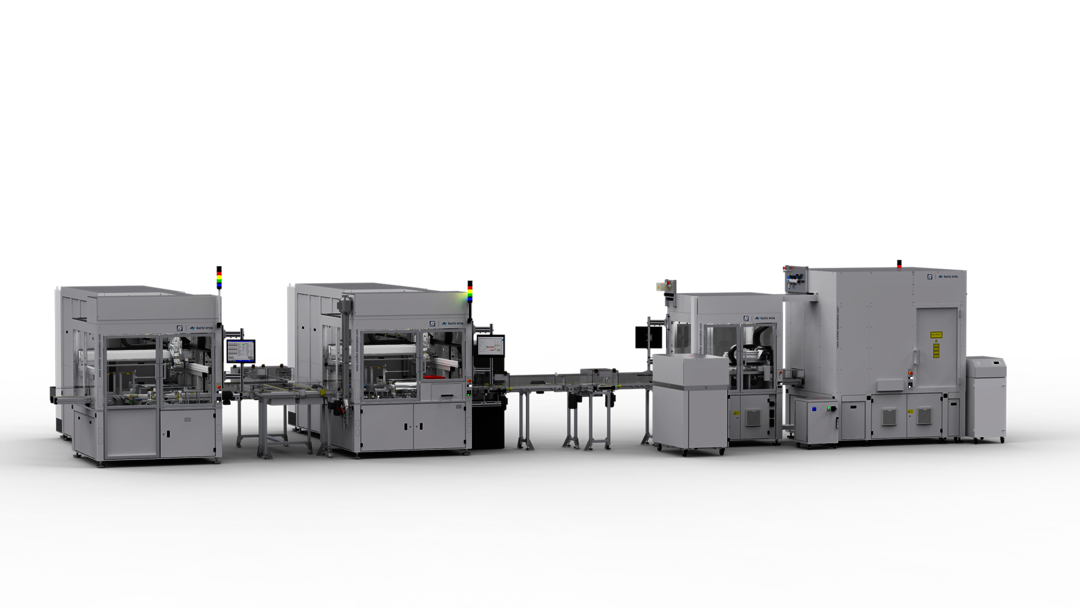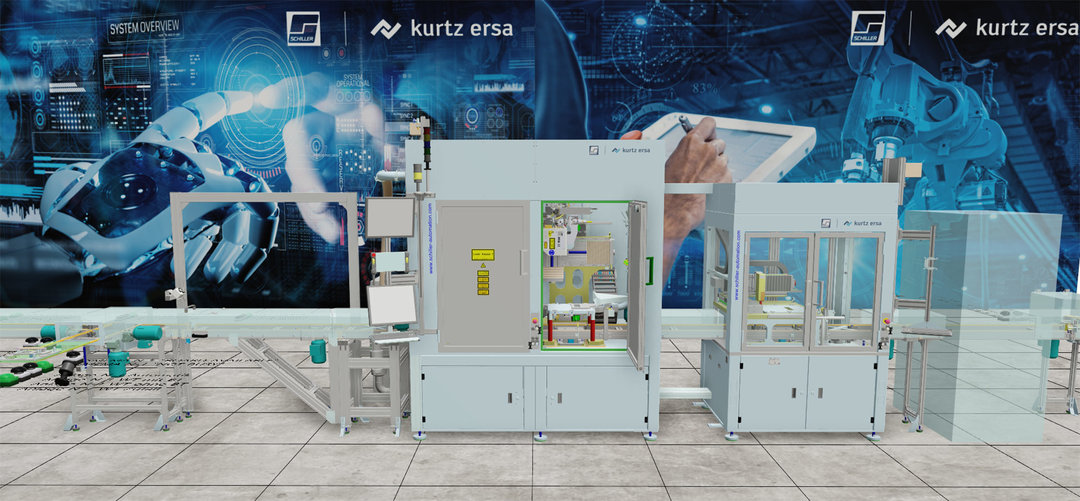The Swabian region is known for its economy of praise - but when it comes to a successful project, a few words often say a lot. “SCHILLER has delivered” was the pleasing message from the purchasing department to our sales engineer in December 2024. Below we report on the successful project “Automation system for the production of power module units for the E-Mobility industry”.
From the idea to early delivery
The project started in February 2024 and was originally scheduled for completion in calendar week 05/2025. Our customer´s request to start sample part production at the final production site ahead of schedule meant that two out of three machines were delivered in the 50th calendar week of 2024. How was this possible? Answer: Engineering skill and an innovative approach to digital transformation.
Success factor virtual commissioning
In a world where time is money, we rely on technological innovation to meet our customers´ expectations. We created a digital twin of the system, which enabled us to carry out a comprehensive virtual commissioning of the software – long before the physical assembly. In phase one, the digital twin was coupled with a simulated PLC in order to extensively test the PLC program. This was followed by the integration of the physically available PLC, which was implemented in the final system configuration, as well as the connection and remote setup of the customer´s MES system. The extensive preparatory work meant that the entire PLC process could be tested against the digital twin in advance, allowing the actual commissioning to be carried out with excellently prepared software. This significantly shortened the commissioning process.
Successful error prevention and cost savings
The simulation in virtual space enabled us to identify and eliminate potential sources of error such as collisions, faulty assembly details and discrepancies in the circuit diagram in advance. This avoided time-consuming rework, which is often associated with physical installations. Software-related challenges could also be identified and resolved at an early stage in conjunction with the digital twin. Using VR glasses, the system could be experienced immersively and the ergonomics assessed in advance, making subsequent physical adjustments unnecessary and guaranteeing an optimized user experience.
Stations of the system
The machines delivered in calendar week 50/2024 include innovative handling systems for feeding blister stacks with trolleys, which offer a high degree of flexibility. Both machines have dynamically configurable input/output chutes and blister quick-change systems, which ensure short changeover times. Trolley handling enables an autonomy of over two hours, which can be extended further depending on the blister configuration. In addition, the assembly stations are fully automated and equipped with gantry robots, conveyor belt systems, component turning units and NIO & SPC trays, including MES connection.
A plasma cleaning process, which is controlled by a dynamically programmable path specification depending on the product, forms the core process of the first station. The second station also integrates a printing process for customer labels and an intelligent camera system for quality assurance of the labels. Both machines were successfully subjected to the acceptance criteria and achieved a degree of completion of over 95%. In March 2025, SCHILLER delivered the third station, which includes a laser welding process with downstream, high-resolution AOI for quality assurance of the weld seams.
Forward-looking perspectives
In order to speed up sample part production and support order acquisition at the end customer, early delivery was made at the customer´s request. Following the successful market launch of our customer, further replica projects are on the horizon.
Many thanks to all those involved, whose outstanding work and commitment made this success possible. We are proud of our strong team and look forward to future challenges in modern mechanical engineering!

